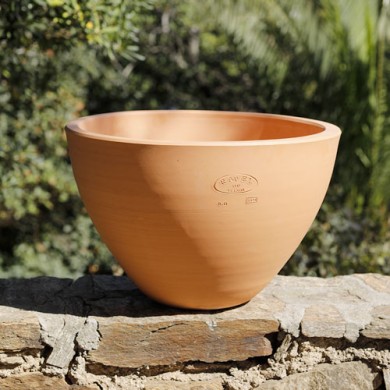When choosing a pot, shape and size matter... but the choice of finish is just as important.
- Menu
-
Factory
Since 1803, Poterie Ravel has been part of a French ornamental garden tradition.
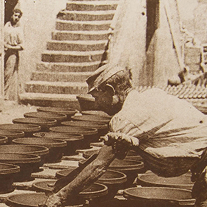 In the shade of an olive tree or in the coolness of old walls, you will take the time to discover true craftsmanship...
In the shade of an olive tree or in the coolness of old walls, you will take the time to discover true craftsmanship... We walk through it discovering the entire production of the House: garden vases and dishes.
We walk through it discovering the entire production of the House: garden vases and dishes.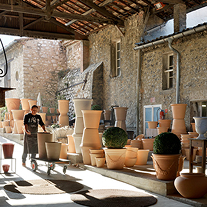 Free workshop tours.
Free workshop tours.
Thursday at 10 am without appointment. When you arrive at the Factory, it's like being in a small village. You meet the potter, the kiln loaders, or the molders.
When you arrive at the Factory, it's like being in a small village. You meet the potter, the kiln loaders, or the molders.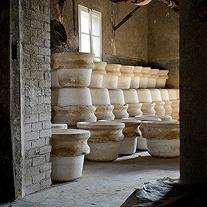
-
Collections
Pots ranging from 20 to 120 cm in height, that adapt to your style and needs.
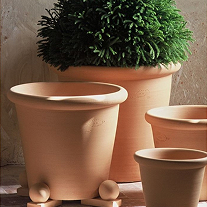 Traditional jars ranging from 20 to 80 cm in height, adapting to your needs.
Traditional jars ranging from 20 to 80 cm in height, adapting to your needs. Basins with or without holes for your plants or pond.
Basins with or without holes for your plants or pond.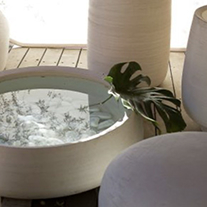 Collections designed by designers such as: Tristan Auer, India Mahdavi, Olivier Gagnère, and Jean-Marie Massaud.
Collections designed by designers such as: Tristan Auer, India Mahdavi, Olivier Gagnère, and Jean-Marie Massaud.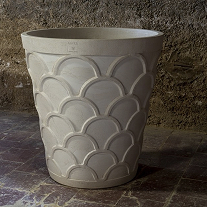 Give the gift of craftsmanship with a gift card.
Give the gift of craftsmanship with a gift card. Come and discover a wider selection of products on site: dishware, unique pieces, artist residency.
Come and discover a wider selection of products on site: dishware, unique pieces, artist residency.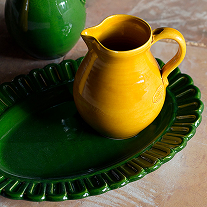 Discover all our collections.
Discover all our collections.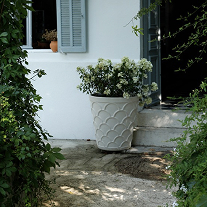
-
Blush by Ravel
Encounters with big names and artist residencies encourage boldness...
Petit H - HERMES
Debeaulieu
Kirsch Christian Lacroix
Christian Lacroix
Gérard Traquandi
India Mahdavi
Matthieu Cossé
Claire Basler
Pierre Marie
Robin Leforestier Discover all our collaborations with various artists, creators, or brands.
Discover all our collaborations with various artists, creators, or brands.
-
The newspaper
Advice for your pots, plants, and layouts
Advice on planting & Maintaining your pottery. Arrange your garden, terrace, or balcony
Arrange your garden, terrace, or balcony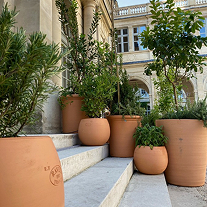 Find answers to all your questions.
Find answers to all your questions.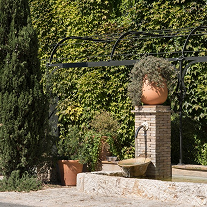 Find all our advice and answers to your questions.
Find all our advice and answers to your questions.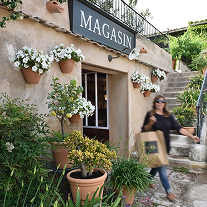
-
Pro Space
Professional space
This secure area is entirely reserved for you, and allows you to submit your online quote requests in just a few clicks. Access our entire product catalog and make your selection. You will also find in the download area all the pots from our catalog cut out on a white background in JPEG format for your presentations and perspectives.
-
My accountCreate an account
By creating an account, you will benefit from the following advantages:
- Manage your account information
- Access your order history
- Make a return request easily
- Order faster with your saved information
-
Pro Space
Professional space
This secure area is entirely reserved for you, and allows you to submit your online quote requests in just a few clicks. Access our entire product catalog and make your selection. You will also find in the download area all the pots from our catalog cut out on a white background in JPEG format for your presentations and perspectives.
-
My accountCreate an account
By creating an account, you will benefit from the following advantages:
- Manage your account information
- Access your order history
- Make a return request easily
- Order faster with your saved information
No products in the cart.
0 items
€0.00
Shipping
Total
€0.00
A minimum shopping cart total of €66.67 (tax excl.) is required to validate your order. Current cart total is €0.00 (tax excl.).
Simulate delivery costs
Invalid postal code
Estimated delivery costs:
Loading...
Close
Planting and maintenance
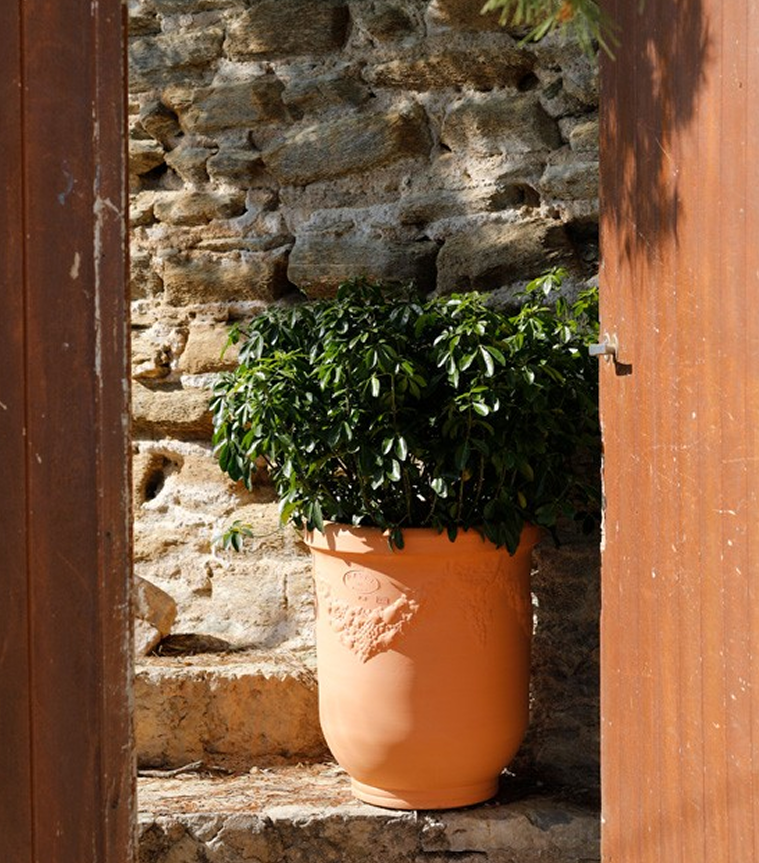
Planting tips
Planting in a garden pottery requires a few simple but essential precautions to ensure the health of your plants and preserve your pots, especially outdoors. Here are our step-by-step tips for successful pot planting.
**1. Properly prepare your garden pot**
First, it is important to thoroughly moisten the pot before adding soil. This helps prevent the substrate from drying out quickly, especially if the pot is made of terracotta.
Next, to ensure good drainage, line the bottom of the pot with a layer of gravel or clay pebbles about one third of the height. This drainage is essential to prevent water from stagnating at the bottom, which could damage the plant's roots.
Over this drainage layer, place a rot-resistant fabric (such as a geotextile felt). It will prevent the soil from mixing with the pebbles while allowing water to pass through.
Finally, fill the pot with soil suitable for the chosen plant, and then proceed with planting.
**2. Tips for outdoor planting**
When your pot is intended to stay outside all year round, some additional precautions should be taken:
- Slightly elevate your pot by placing it on blocks or feet. This allows water to drain well and prevents the bottom of the pot from being in direct contact with the moisture of the ground or a patio.
- In winter, consider removing the saucer if you use one. The water that stagnates there can freeze, causing cracks in the pot and damage to the roots.
Why is drainage so important?
Good drainage protects both the plant and the pot. By facilitating the evacuation of water, it reduces the risks of root rot and limits the effects of frost in winter. An excess of stagnant water is one of the main enemies of pot planting, especially outdoors.

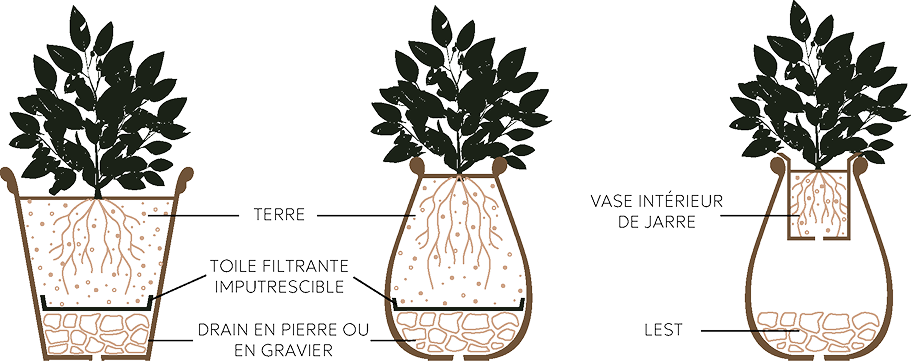
PLANTING STEPS
- Thoroughly water the pot
- Fill the bottom of the pot with gravel or clay pebbles (1/3 of the height)
- Spread a rot-proof fabric over this layer
- Add soil and plant
Our advice for outdoor planting:
- Slightly elevate your pot to allow proper water drainage
- Remove the saucer in winter
Drainage allows water to flow, which greatly reduces the risk of freezing for both the plant and the pot.
1. Good drainage, always!
- You have already implemented it well: gravel or clay balls + rot-proof fabric.
- Drainage plays a dual role here: it reduces the risk of freezing (in winter) and limits rot (in case of excess water).
2. Position the pot correctly
- Slightly elevate the pot (on feet, wedges, blocks) to facilitate the drainage of stagnant water.
- This precaution also prevents the bottom from staying constantly moist, which could damage the pot or its roots.
3. Be attentive in winter
- If you use a saucer, remove it during the cold period: trapped water may freeze, causing cracks in the poterie.
4. Long-term preventive maintenance
- Ravel terracotta potteries are designed to resist frost and UV rays, but they benefit from a little care:
- In case of dirt or moss, simply clean with clear water and a soft brush, without aggressive products.
- To restore a beautiful appearance, a light sanding or a coat of natural oil (olive, linseed, etc.) can revive the color.
- Avoid sudden changes in temperature (washing with cold water in very hot weather, for example).

Other articles

Why choose handmade artisanal poterie made in France?
Choosing handmade pottery is much more than just a decorative purchase: it is an act of meaning, taste and transmission.
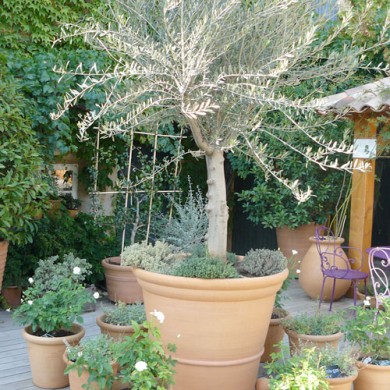
Potted Olive Tree: Care Tips for Its Well-being
A symbol of longevity, light and peace, the olive tree is an emblematic plant of the Mediterranean.
DESIGNER COLLECTIONS
Collections designed by designers such as: Tristan Auer, India Mahdavi, Olivier Gagnère, or Jean-Marie Massaud.
ONLY ON SITE
Come and discover on site a wider selection of products: dishware, unique pieces, artist residency.
OUR COLLECTIONS

